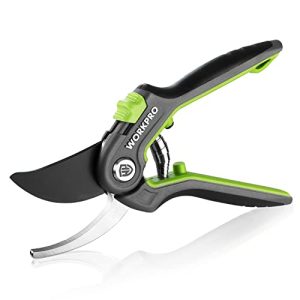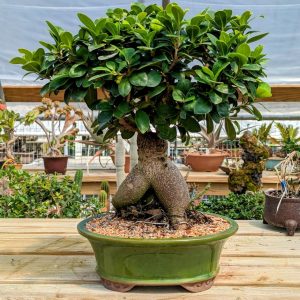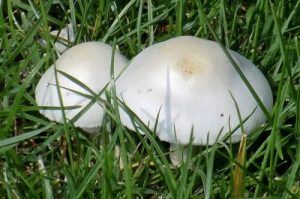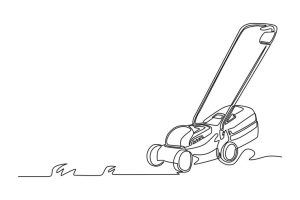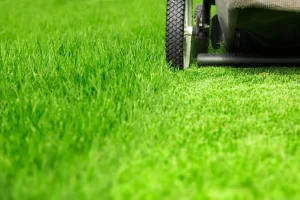Have you ever found yourself captivated by the beauty and elegance of a Ficus Bonsai? These miniature trees, with their intricate branches and lush foliage, are more than just a plant; they are living pieces of art that can transform any space.
Caring for a Ficus Bonsai may seem daunting at first, but with the right guidance, you can master the art of bonsai care and nurture your tree to thrive for years to come. Imagine the satisfaction of watching your Ficus flourish, becoming a testament to your dedication and skill.
In this guide, you’ll discover simple yet effective tips to ensure your bonsai remains healthy and vibrant. Whether you’re a seasoned bonsai enthusiast or a curious beginner, unlocking the secrets of Ficus Bonsai care will not only enhance your gardening skills but also bring tranquility and beauty into your life. Ready to dive into the world of Ficus Bonsai? Let’s get started!

Credit: www.youtube.com
Choosing The Right Ficus Bonsai
Choosing the right ficus bonsai is essential for a thriving plant. With numerous ficus species available, each offers unique characteristics. Understanding these differences helps in selecting the best fit for your space and skill level. Let’s explore how to choose the perfect ficus bonsai for you.
Ficus Retusa: A Popular Choice
The Ficus Retusa is well-loved by bonsai enthusiasts. It boasts a robust nature with an attractive appearance. Its glossy leaves and thick trunk make it visually appealing. This species is ideal for beginners due to its resilience.
Ficus Benjamina: Graceful And Elegant
Ficus Benjamina offers an elegant look with its weeping branches. It suits indoor environments with ample light. Its delicate leaves add a touch of grace to any room. Although beautiful, it requires more attention and care.
Ficus Microcarpa: Versatile And Easygoing
The Ficus Microcarpa is known for its adaptability. It’s perfect for those with varying light conditions. With a sturdy trunk and dense foliage, it’s easy to shape. Its forgiving nature makes it a favorite among novice growers.
Consider Your Environment
Assess your home’s lighting and humidity before choosing. Ficus bonsai thrive in bright, indirect light. Humidity levels should be moderate for healthy growth. Understanding your environment ensures the best choice for your ficus bonsai.
Think About Maintenance
Consider your time and commitment level. Some ficus bonsai require regular pruning and shaping. Choose a species that aligns with your available care time. A well-maintained bonsai rewards you with beauty and tranquility.
Ideal Location And Lighting
Your Ficus Bonsai deserves the perfect spot in your home or garden to thrive beautifully. Finding the ideal location and lighting is crucial in ensuring that your bonsai remains healthy and vibrant. With the right balance of light and placement, your ficus can flourish, showcasing its stunning foliage and intricate form. But where should you place it? Indoors or outdoors? What type of light does it need? Let’s break it down.
Indoor Vs Outdoor Placement
Deciding whether to place your Ficus Bonsai indoors or outdoors depends on several factors. Indoors, your bonsai is shielded from harsh weather and sudden temperature changes. This can be ideal if you live in an area with extreme climates.
On the other hand, outdoor placement allows your bonsai to benefit from natural light and fresh air, essential for its growth. However, outdoor placement requires protection from strong winds and direct sunlight.
Consider your climate, space, and time available for care. I remember placing my ficus near a large window indoors; it thrived thanks to the gentle sunlight filtering through.
Natural Light Requirements
Natural light is vital for your Ficus Bonsai’s health. Ideally, it should receive bright, indirect sunlight for at least four to six hours a day. Direct sunlight can scorch the leaves, while too little light can stunt growth.
Try placing your bonsai near a window that receives filtered sunlight or in a shaded spot outdoors. Test different locations to find where your ficus seems happiest.
Have you ever noticed how plants lean towards light? Your bonsai will do the same, so rotate it occasionally to ensure even growth.
Artificial Lighting Options
If natural light is scarce, artificial lighting can be a great alternative. LED grow lights are popular choices among bonsai enthusiasts. They mimic the sun’s spectrum and provide the necessary energy for photosynthesis.
Position the grow lights above your bonsai at a distance where the heat won’t damage the leaves. A timer can help regulate light exposure, ensuring your ficus gets consistent light.
Experiment with different types of bulbs to find the one that your bonsai prefers. Have you tried using grow lights before? They might just be the solution if your home lacks natural light.
Caring for your Ficus Bonsai involves understanding its needs and adapting to them. Whether it’s finding the perfect spot indoors or investing in grow lights, your bonsai’s placement and lighting are key to its success. Are you ready to see your ficus flourish?
Watering Techniques
Caring for a Ficus Bonsai involves precise watering techniques. Ensure the soil remains moist but not soggy. Water thoroughly when the top soil feels dry, allowing excess to drain.
Watering your ficus bonsai is crucial for its health. Proper techniques ensure its growth and vitality. An ideal watering routine keeps the soil moist but not soggy. Understanding your bonsai’s needs helps it thrive.Determining Watering Frequency
Assess the soil moisture regularly. Touch the topsoil to check if it is dry. Use a moisture meter for precise readings. Adjust the frequency according to weather conditions. In warmer months, increase watering. During cooler seasons, reduce it. Each bonsai has unique needs. Observe yours closely.Signs Of Overwatering And Underwatering
Watch for yellow leaves. They indicate overwatering. Drooping leaves suggest underwatering. Root rot is a serious issue. It results from too much water. Dry, brittle leaves show a lack of water. These signs are crucial to notice early. They help prevent serious damage.Proper Watering Methods
Water until it drains from the pot’s bottom. Use room temperature water. Cold water can shock the plant. Early morning is ideal for watering. It prevents fungal growth. Ensure the soil remains evenly moist. Avoid letting it dry out completely. A gentle watering can is best. It mimics natural rainfall.Soil And Pot Selection
Choosing the right soil is essential for a healthy Ficus Bonsai. Opt for well-draining soil to prevent root rot. Select a pot that accommodates growth and has drainage holes.
Caring for a Ficus Bonsai is a rewarding journey that requires attention to detail, especially when it comes to soil and pot selection. The right soil mix, drainage, and pot are crucial for the health and growth of your bonsai. With the right choices, you can ensure your Ficus thrives and becomes a beautiful centerpiece in your home. But how do you make these choices with confidence? Let’s dive into the essentials.Choosing The Right Soil Mix
Selecting the right soil mix is like setting the foundation for your bonsai’s future. Ficus Bonsai prefers a soil mix that offers good aeration and moisture retention. A mix that includes akadama, pumice, and lava rock is ideal. These components help keep the soil loose, allowing roots to breathe and absorb nutrients. Imagine the roots as tiny straws—they need to be able to sip water without drowning. Would you choose a straw that’s clogged? Neither would your bonsai.Importance Of Drainage
Good drainage is the unsung hero of bonsai care. Without it, your Ficus can suffer from root rot, a silent killer. Ensuring proper drainage prevents water from pooling at the bottom of the pot. Adding a layer of gravel or small stones at the base can improve drainage. Consider this: if you were wearing shoes that trapped water, would you feel comfortable? Your bonsai roots need that comfort too.Selecting The Appropriate Pot
The pot is more than just a container—it’s part of the bonsai’s aesthetic and health. Choose a pot that complements the size and style of your Ficus Bonsai. The pot should have drainage holes to allow excess water to escape. The pot’s material matters too. Ceramic pots are popular for their beauty and durability. A pot that’s too large can lead to overwatering. Think of it as picking the perfect outfit; it should fit well and make your bonsai look its best. In your bonsai care journey, soil and pot selection play pivotal roles. Each choice you make impacts the health and beauty of your Ficus Bonsai. As you nurture your bonsai, remember these essentials: soil, drainage, and pot. What choices will you make to ensure your Ficus Bonsai thrives?Pruning And Shaping
Pruning and shaping are vital for a healthy Ficus bonsai. Trim branches regularly to maintain its form. Control growth by cutting back unwanted shoots and leaves.
Pruning and shaping your Ficus bonsai is not just about keeping it neat. It’s about guiding your tree to grow in harmony with your vision. This process allows you to express creativity while ensuring the health of your plant. I’ve found that a little attention to detail can transform a bonsai from ordinary to a captivating piece of art. But how do you go about it? Let’s dive into the essentials.Tools For Pruning
Before you start, gather the right tools. You’ll need a pair of sharp pruning shears or bonsai scissors. These tools help make clean cuts, reducing the chance of damage or infection. A small concave cutter is also useful for removing larger branches. It helps you achieve a smooth finish that heals quickly. Having a bonsai wire cutter on hand is beneficial if you’re using wire to shape your tree.Timing And Techniques
Timing is crucial when pruning your Ficus bonsai. The best time is during its active growth phase, typically in spring and summer. This is when the tree can recover quickly from cuts. When pruning, remove any dead or unhealthy branches first. This encourages new growth. Trim back new shoots to the desired length, cutting above a leaf node to promote branching.Maintaining Desired Shape
Shaping your Ficus bonsai is an ongoing process. Regularly check the tree’s growth and adjust as needed. This prevents the tree from becoming overgrown and losing its form. Use wire to gently guide branches into the desired position. Be careful not to wrap the wire too tightly, as this can damage the bark. Regularly inspect the wired branches and adjust if necessary. Are you ensuring your bonsai’s shape aligns with your vision? Remember, patience is key. With time and care, your Ficus bonsai will flourish, reflecting both its natural beauty and your personal touch.Fertilizing Needs
Caring for a Ficus Bonsai involves understanding its fertilizing needs. Proper fertilization ensures healthy growth and vibrant leaves. It’s essential to know the right types of fertilizers, how often to apply them, and the signs of nutrient deficiency. Let’s dive into these aspects for a flourishing Ficus Bonsai.
Types Of Fertilizers
Ficus Bonsai trees thrive with balanced fertilizers. Opt for a fertilizer with equal parts nitrogen, phosphorus, and potassium. Organic options, like fish emulsion or liquid seaweed, work well. These provide essential nutrients without harsh chemicals. Slow-release fertilizers are also beneficial. They offer nutrients over time, reducing the risk of over-fertilization.
Frequency Of Application
Apply fertilizer during the growing season. This typically spans from early spring to late summer. Feed your Ficus Bonsai every two weeks. In the fall and winter, reduce the frequency. Once a month is enough when growth slows. Always follow package instructions for best results. Dilute liquid fertilizers to prevent root burn.
Signs Of Nutrient Deficiency
Watch for yellowing leaves. This can indicate a lack of nutrients. Stunted growth is another sign. Your Bonsai may need more fertilizer. Leaf drop can also suggest deficiencies. Ensure you’re using the right type and amount of fertilizer. Adjust as needed for a healthy, thriving Bonsai.
Pest And Disease Management
Ficus bonsai care includes managing pests and diseases. Regularly inspect leaves for signs of insects. Remove affected leaves promptly to prevent spread. Use mild insecticidal soap if needed. Ensure proper drainage to avoid root rot. Keep the plant healthy with balanced watering and adequate light, reducing disease risk naturally.
Caring for a Ficus Bonsai can be a rewarding experience, but it does come with its challenges, particularly when it comes to pests and diseases. A healthy bonsai is an attractive bonsai, yet pests and diseases can quickly mar its beauty. By understanding the common issues and how to manage them, you can ensure your bonsai remains a stunning centerpiece in your home.Common Pests And Solutions
Ficus Bonsai often attract pests like aphids, spider mites, and mealybugs. These tiny invaders can wreak havoc on your plant if left unchecked. Aphids are small, soft-bodied insects that suck sap from the plant. You might notice them clustered on new growth. To tackle them, simply spray your bonsai with a strong jet of water to dislodge them. Spider mites, though barely visible, leave tell-tale signs like webbing and yellowing leaves. A gentle mixture of water and mild dish soap can effectively wash them away. For mealybugs, which appear as white cottony masses, dabbing them with a cotton swab soaked in rubbing alcohol can work wonders.Preventing Fungal Infections
Fungal infections can be tricky. They often result from overwatering or poor air circulation. Have you ever noticed black spots on your bonsai’s leaves? This could be a sign of fungal disease. To prevent these infections, ensure your plant is in a well-ventilated area. Avoid letting water sit on the leaves for too long. Consistent but moderate watering helps keep the soil from becoming a breeding ground for fungi. Regularly inspecting your bonsai for early signs of trouble is an easy preventative measure. Catching problems early can save you a lot of headache later.Organic Control Methods
Not a fan of chemical treatments? You’re in luck! Organic methods can be just as effective and safer for your home environment. Neem oil is a popular choice. It’s a natural pesticide that can deter a variety of pests. Mixing a few drops with water and spraying it on your bonsai is usually enough to keep the critters at bay. Another method is introducing beneficial insects like ladybugs, which naturally prey on aphids and other pests. They can be a gardener’s best friend, taking care of the problem for you. Have you tried using essential oils? Oils like lavender or peppermint can act as natural repellents. A simple spray around your bonsai can create a pest-free zone. Which method will you choose to keep your Ficus Bonsai thriving?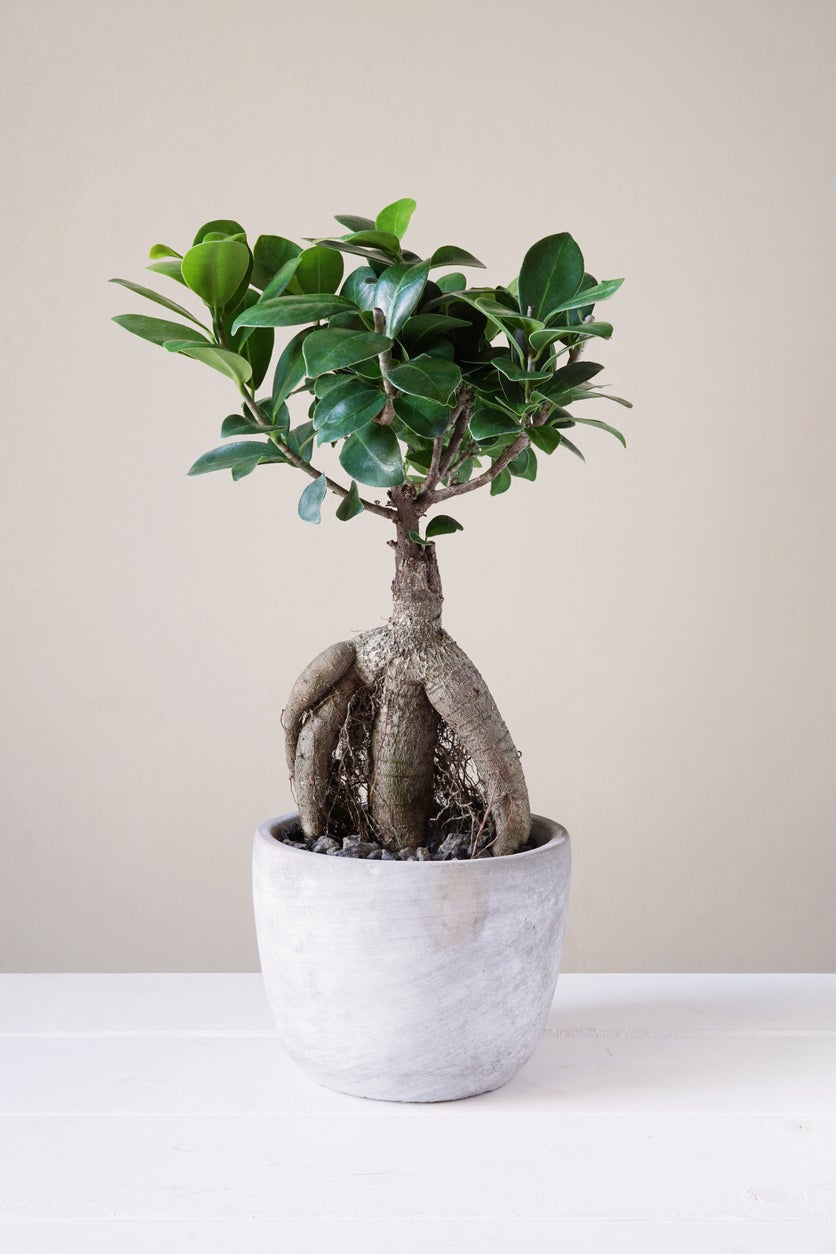
Credit: www.gardeningknowhow.com
Repotting Guidelines
Repotting a Ficus Bonsai involves choosing a well-draining soil mix to prevent root rot. Carefully trim dead roots and replant in a slightly larger pot. Ensure the bonsai receives indirect sunlight and water sparingly after repotting to allow the roots to settle.
Repotting a Ficus Bonsai is crucial for its health and growth. Understanding when and how to repot ensures your bonsai thrives. This guide provides clear steps for repotting and caring for your Ficus Bonsai. Each section is designed to make the process easy and enjoyable.When To Repot
Repotting should occur every two years. Spring is the ideal time. The roots need space to grow. Check if they are circling the pot. If yes, it’s time to repot. A crowded pot restricts growth. Fresh soil provides nutrients. Monitor root health regularly.Steps For Successful Repotting
Start by preparing a new pot. Ensure it has drainage holes. Remove the bonsai from its current pot. Trim excessive roots gently. Place the bonsai in the new pot. Add fresh soil around the roots. Pat the soil lightly to secure the plant. Water thoroughly after repotting. Ensure the soil is moist.Aftercare Tips
Keep the bonsai in a shaded area for a week. Avoid direct sunlight initially. Water consistently but avoid waterlogging. Check soil moisture often. Fertilize after two weeks using bonsai-specific fertilizers. Observe the plant’s growth and health. Adjust care based on its response.Seasonal Care Adjustments
Ficus bonsai trees require special attention throughout the year. Seasonal care adjustments help maintain their beauty and health. Each season brings unique challenges and needs. Knowing these can ensure your ficus bonsai thrives.
Spring And Summer Care
During spring, ficus bonsai trees grow actively. Increase watering frequency as temperatures rise. Ensure soil stays moist but not soggy. Use a balanced fertilizer to support growth. Spring is ideal for pruning and shaping your bonsai. Trim excess leaves and branches to encourage new growth.
Summer demands more attention to watering. Check your bonsai daily. Water deeply, especially during dry spells. Position your bonsai where it receives bright, indirect sunlight. Avoid direct afternoon sun to prevent leaf burn. Monitor for pests, as warmer months attract insects.
Autumn And Winter Adjustments
As autumn arrives, reduce watering. Ficus bonsai trees slow their growth. Keep the soil slightly dry between waterings. Move your bonsai indoors if temperatures drop significantly. Protect it from cold drafts. Autumn is a good time for repotting. Refresh the soil and inspect the roots.
Winter care involves minimal watering. Ensure your bonsai receives adequate light indoors. Consider placing it under grow lights. Monitor humidity levels. Indoor heating can dry the air. Use a humidity tray or mist the leaves regularly.
Handling Environmental Changes
Environmental changes affect ficus bonsai health. Adjust care routines as needed. Observe your bonsai’s response to light and temperature shifts. Move the tree if necessary. Avoid sudden changes in environment. Gradual adjustments help reduce stress. Keep an eye on leaf color and growth patterns. These indicate if your care is effective.

Credit: www.bonsaiempire.com
Troubleshooting Common Issues
Even with the best care, ficus bonsai trees can face problems. Knowing common issues helps in maintaining their health. Below are some typical challenges and how to address them.
Yellowing Leaves
Yellow leaves often signal too much water. Check the soil moisture. It should be slightly dry before watering again. Overwatering suffocates roots. This leads to yellow leaves. Ensure the pot has drainage holes. This prevents water from collecting at the bottom.
Leaf Drop
Leaf drop can alarm many bonsai owners. It usually means stress. Changes in environment often cause this. Moving the tree or changing light can trigger leaf drop. Check if the tree is in a drafty area. Keep it in a stable environment. Consistency is key for ficus bonsai trees.
Stunted Growth
Ficus bonsai not growing? It could lack nutrients. Feeding with balanced fertilizer helps. Ensure the tree gets enough sunlight. Six hours of indirect light is ideal. Poor soil can also stunt growth. Repot every two years using fresh soil mix. Healthy roots promote healthy growth.
Frequently Asked Questions
How Often Do You Water A Ficus Bonsai Tree?
Water a ficus bonsai tree once the topsoil feels dry. Typically, this is every 4-7 days. Ensure thorough watering until water drains from the pot’s bottom. Avoid overwatering to prevent root rot. Adjust frequency based on season and indoor conditions.
What Is The Rule Of 3 In Bonsai?
The rule of 3 in bonsai involves balancing three elements: roots, trunk, and foliage. Each should harmonize in proportion, enhancing the tree’s aesthetic appeal. This principle guides bonsai artists in creating a visually pleasing and balanced tree structure.
How Do You Care For A Ficus Tree Indoors?
Place your ficus tree in bright, indirect light. Water when the top inch of soil feels dry. Maintain humidity by misting or using a humidifier. Fertilize monthly during growing season with balanced fertilizer. Prune regularly to encourage growth and remove dead leaves.
How Much Sunlight Does A Ficus Bonsai Tree Need?
A ficus bonsai tree requires bright, indirect sunlight for optimal growth. Place it near a window with filtered light. Direct sunlight can harm the leaves, so avoid exposure to harsh rays. Ensure consistent lighting to maintain its health and vibrancy.
Proper sunlight is crucial for a thriving ficus bonsai.
Conclusion
Caring for a Ficus bonsai is a rewarding hobby. Regular watering keeps it healthy. Make sure it gets enough sunlight. Pruning helps shape its beauty. Fertilize during the growing season. Watch out for pests and diseases. They can harm your bonsai.
Follow these steps for a thriving plant. Enjoy the peace and beauty it brings. Bonsai care takes patience and love. Your efforts will pay off. Enjoy the journey of bonsai care. Create a serene space with your Ficus bonsai. Feel the calm it adds to your home.


